Tomi H. Kinnunen
Joint Optimization of Speaker and Spoof Detectors for Spoofing-Robust Automatic Speaker Verification
Oct 02, 2025Abstract:Spoofing-robust speaker verification (SASV) combines the tasks of speaker and spoof detection to authenticate speakers under adversarial settings. Many SASV systems rely on fusion of speaker and spoof cues at embedding, score or decision levels, based on independently trained subsystems. In this study, we respect similar modularity of the two subsystems, by integrating their outputs using trainable back-end classifiers. In particular, we explore various approaches for directly optimizing the back-end for the recently-proposed SASV performance metric (a-DCF) as a training objective. Our experiments on the ASVspoof 5 dataset demonstrate two important findings: (i) nonlinear score fusion consistently improves a-DCF over linear fusion, and (ii) the combination of weighted cosine scoring for speaker detection with SSL-AASIST for spoof detection achieves state-of-the-art performance, reducing min a-DCF to 0.196 and SPF-EER to 7.6%. These contributions highlight the importance of modular design, calibrated integration, and task-aligned optimization for advancing robust and interpretable SASV systems.
Towards Explainable Spoofed Speech Attribution and Detection:a Probabilistic Approach for Characterizing Speech Synthesizer Components
Feb 07, 2025Abstract:We propose an explainable probabilistic framework for characterizing spoofed speech by decomposing it into probabilistic attribute embeddings. Unlike raw high-dimensional countermeasure embeddings, which lack interpretability, the proposed probabilistic attribute embeddings aim to detect specific speech synthesizer components, represented through high-level attributes and their corresponding values. We use these probabilistic embeddings with four classifier back-ends to address two downstream tasks: spoofing detection and spoofing attack attribution. The former is the well-known bonafide-spoof detection task, whereas the latter seeks to identify the source method (generator) of a spoofed utterance. We additionally use Shapley values, a widely used technique in machine learning, to quantify the relative contribution of each attribute value to the decision-making process in each task. Results on the ASVspoof2019 dataset demonstrate the substantial role of duration and conversion modeling in spoofing detection; and waveform generation and speaker modeling in spoofing attack attribution. In the detection task, the probabilistic attribute embeddings achieve $99.7\%$ balanced accuracy and $0.22\%$ equal error rate (EER), closely matching the performance of raw embeddings ($99.9\%$ balanced accuracy and $0.22\%$ EER). Similarly, in the attribution task, our embeddings achieve $90.23\%$ balanced accuracy and $2.07\%$ EER, compared to $90.16\%$ and $2.11\%$ with raw embeddings. These results demonstrate that the proposed framework is both inherently explainable by design and capable of achieving performance comparable to raw CM embeddings.
An Explainable Probabilistic Attribute Embedding Approach for Spoofed Speech Characterization
Sep 17, 2024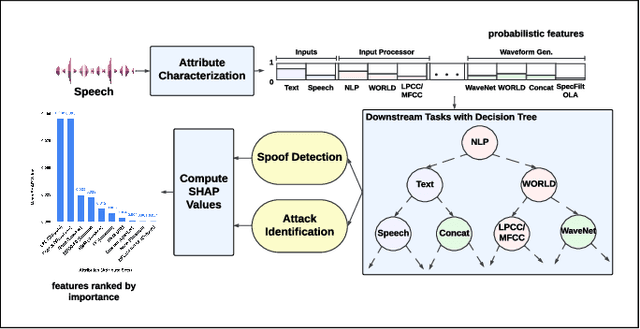
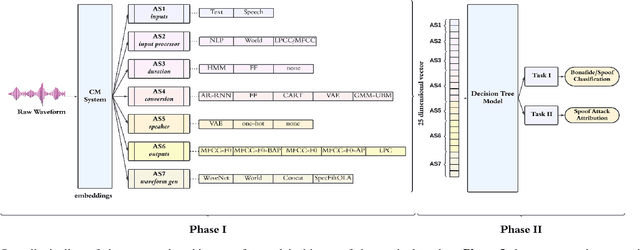
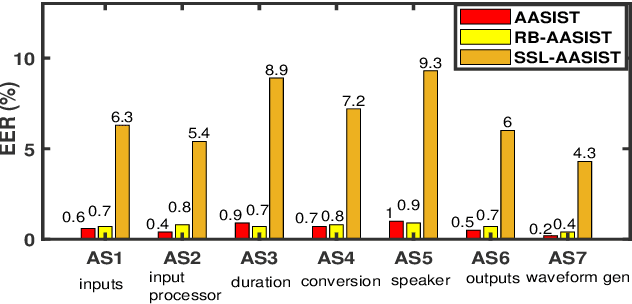
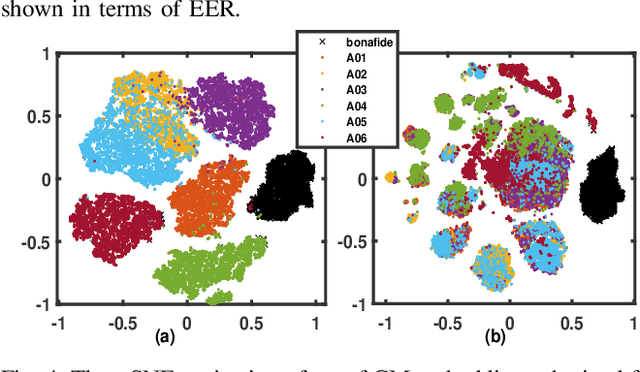
Abstract:We propose a novel approach for spoofed speech characterization through explainable probabilistic attribute embeddings. In contrast to high-dimensional raw embeddings extracted from a spoofing countermeasure (CM) whose dimensions are not easy to interpret, the probabilistic attributes are designed to gauge the presence or absence of sub-components that make up a specific spoofing attack. These attributes are then applied to two downstream tasks: spoofing detection and attack attribution. To enforce interpretability also to the back-end, we adopt a decision tree classifier. Our experiments on the ASVspoof2019 dataset with spoof CM embeddings extracted from three models (AASIST, Rawboost-AASIST, SSL-AASIST) suggest that the performance of the attribute embeddings are on par with the original raw spoof CM embeddings for both tasks. The best performance achieved with the proposed approach for spoofing detection and attack attribution, in terms of accuracy, is 99.7% and 99.2%, respectively, compared to 99.7% and 94.7% using the raw CM embeddings. To analyze the relative contribution of each attribute, we estimate their Shapley values. Attributes related to acoustic feature prediction, waveform generation (vocoder), and speaker modeling are found important for spoofing detection; while duration modeling, vocoder, and input type play a role in spoofing attack attribution.
Optimizing a-DCF for Spoofing-Robust Speaker Verification
Jul 04, 2024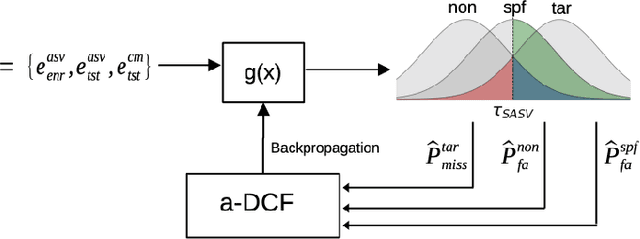
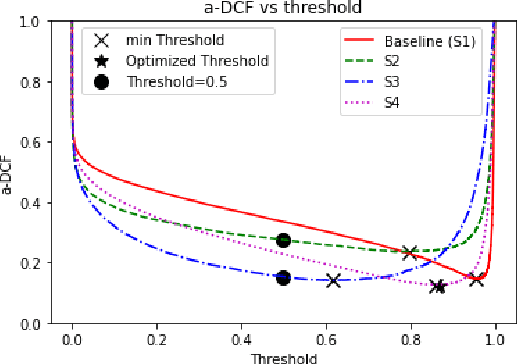
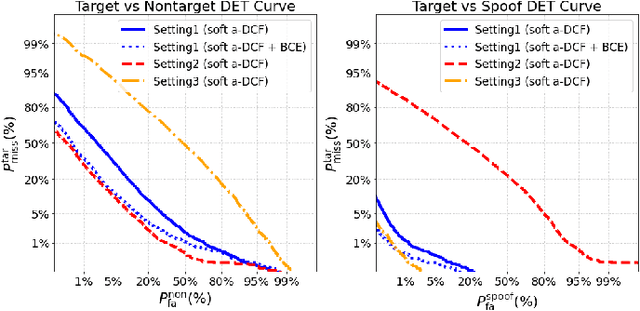

Abstract:Automatic speaker verification (ASV) systems are vulnerable to spoofing attacks such as text-to-speech. In this study, we propose a novel spoofing-robust ASV back-end classifier, optimized directly for the recently introduced, architecture-agnostic detection cost function (a-DCF). We combine a-DCF and binary cross-entropy (BCE) losses to optimize the network weights, combined by a novel, straightforward detection threshold optimization technique. Experiments on the ASVspoof2019 database demonstrate considerable improvement over the baseline optimized using BCE only (from minimum a-DCF of 0.1445 to 0.1254), representing 13% relative improvement. These initial promising results demonstrate that it is possible to adjust an ASV system to find appropriate balance across the contradicting aims of user convenience and security against adversaries.
An Initial study on Birdsong Re-synthesis Using Neural Vocoders
Sep 21, 2022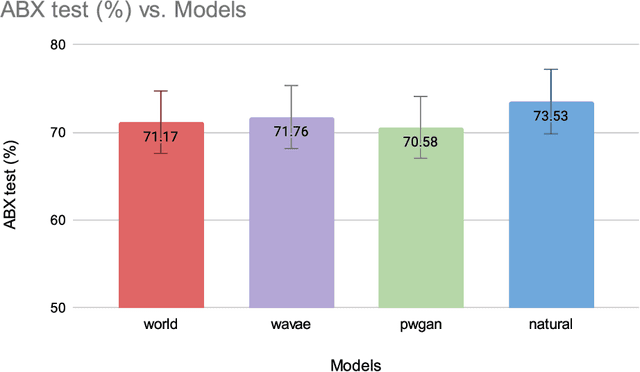
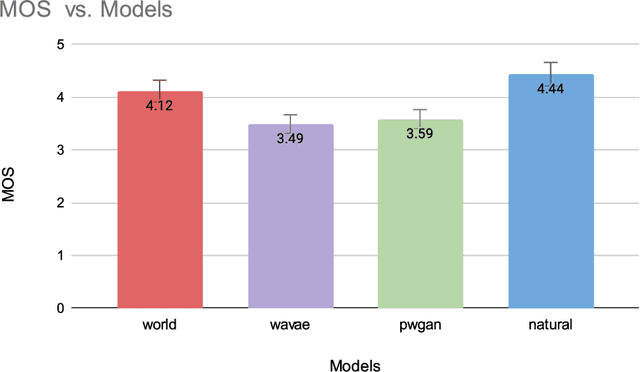
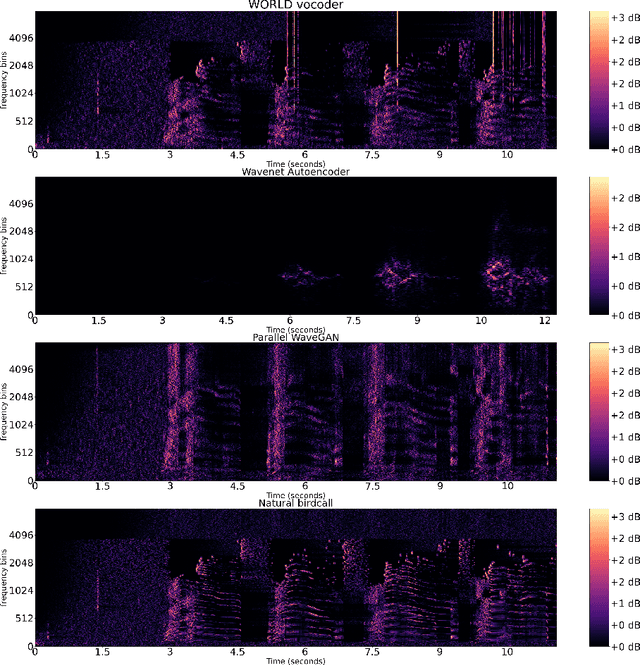
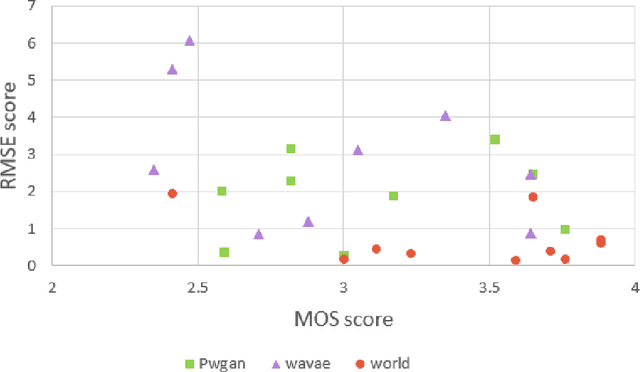
Abstract:Modern speech synthesis uses neural vocoders to model raw waveform samples directly. This increased versatility has expanded the scope of vocoders from speech to other domains, such as music. We address another interesting domain of bio-acoustics. We provide initial comparative analysis-resynthesis experiments of birdsong using traditional (WORLD) and two neural (WaveNet autoencoder, parallel WaveGAN) vocoders. Our subjective results indicate no difference in the three vocoders in terms of species discrimination (ABX test). Nonetheless, the WORLD vocoder samples were rated higher in terms of retaining bird-like qualities (MOS test). All vocoders faced issues with pitch and voicing. Our results indicate some of the challenges in processing low-quality wildlife audio data.
Neural i-vectors
Apr 18, 2020


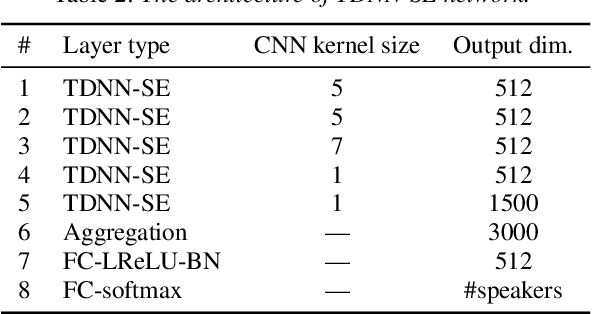
Abstract:Deep speaker embeddings have been demonstrated to outperform their generative counterparts, i-vectors, in recent speaker verification evaluations. To combine the benefits of high performance and generative interpretation, we investigate the use of deep embedding extractor and i-vector extractor in succession. To bundle the deep embedding extractor with an i-vector extractor, we adopt aggregation layers inspired by the Gaussian mixture model (GMM) to the embedding extractor networks. The inclusion of GMM-like layer allows the discriminatively trained network to be used as a provider of sufficient statistics for the i-vector extractor to extract what we call neural i-vectors. We compare the deep embeddings to the proposed neural i-vectors on the Speakers in the Wild (SITW) and the Speaker Recognition Evaluation (SRE) 2018 and 2019 datasets. On the core-core condition of SITW, our deep embeddings obtain performance comparative to the state-of-the-art. The neural i-vectors obtain about 50% worse performance than the deep embeddings, but on the other hand outperform the previous i-vector approaches reported in the literature by a clear margin.
Unleashing the Unused Potential of I-Vectors Enabled by GPU Acceleration
Jun 20, 2019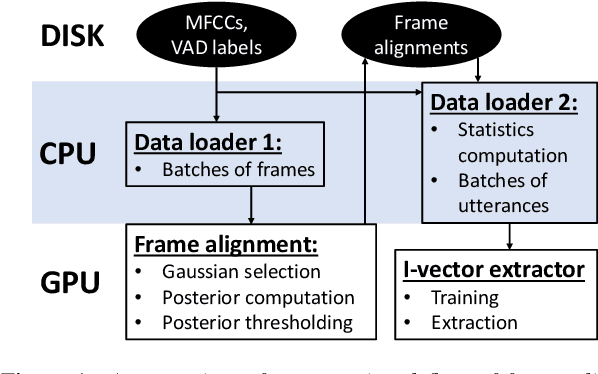
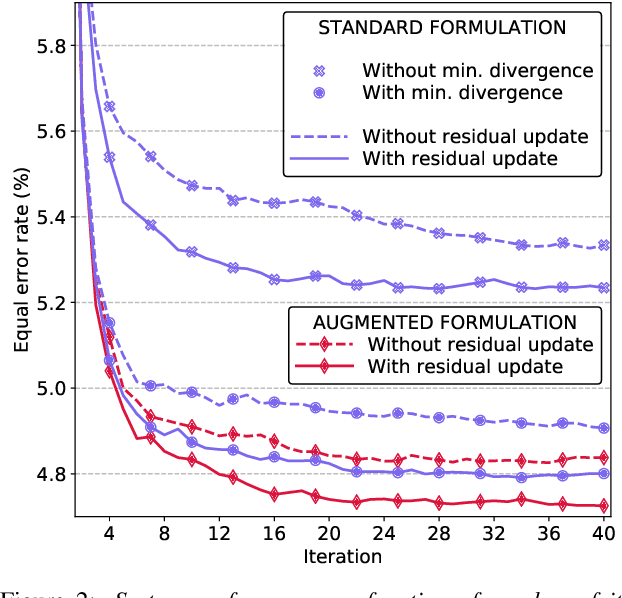
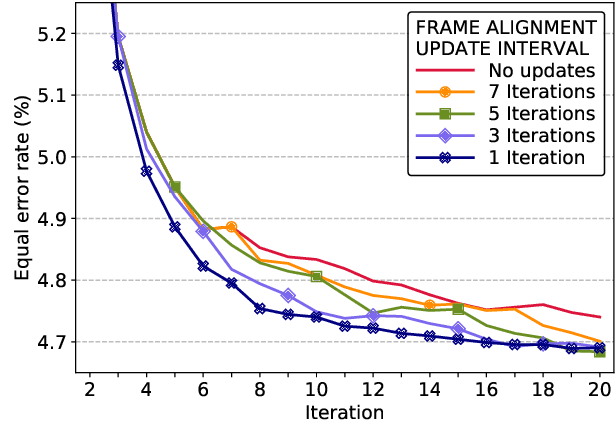
Abstract:Speaker embeddings are continuous-value vector representations that allow easy comparison between voices of speakers with simple geometric operations. Among others, i-vector and x-vector have emerged as the mainstream methods for speaker embedding. In this paper, we illustrate the use of modern computation platform to harness the benefit of GPU acceleration for i-vector extraction. In particular, we achieve an acceleration of 3000 times in frame posterior computation compared to real time and 25 times in training the i-vector extractor compared to the CPU baseline from Kaldi toolkit. This significant speed-up allows the exploration of ideas that were hitherto impossible. In particular, we show that it is beneficial to update the universal background model (UBM) and re-compute frame alignments while training the i-vector extractor. Additionally, we are able to study different variations of i-vector extractors more rigorously than before. In this process, we reveal some undocumented details of Kaldi's i-vector extractor and show that it outperforms the standard formulation by a margin of 1 to 2% when tested with VoxCeleb speaker verification protocol. All of our findings are asserted by ensemble averaging the results from multiple runs with random start.
 Add to Chrome
Add to Chrome Add to Firefox
Add to Firefox Add to Edge
Add to Edge